5 factors in transforming the auto supply chain
Vamshi Rachakonda and Roshan Batheri | Automotive News
5 factors in transforming the auto supply chain
The automotive industry has undergone significant disruption in recent years. Advancements in electric mobility, autonomous solutions, 汽车零售和汽车互联推动了汽车行业的发展,让企业和消费者都对未来的发展感到兴奋. Despite all of this growth, the COVID-19 pandemic ushered in challenges, specifically surrounding supply chains. 半导体短缺和其他地缘政治因素导致了所有功能的供需问题, 是什么让行业中的许多公司专注于建立一个既灵活又有弹性的面向未来的供应链. To ensure preparedness for potential future crises, 许多汽车制造商已经开始将其供应链数字化,并将风险管理作为其战略的一部分. 但是,这种文化和技术向弹性的转变——以及对可持续性的额外关注——不可能在一夜之间发生, 在这一过程中,汽车公司需要考虑很多因素. Here are the five major factors impacting the automotive supply chain. 1. Global uncertainties and geographic regulatory guidelines The U.S. auto market is one of the largest global markets, with a combination of import and local production supply chain strategies. Complex global supply chains and triggers such as material shortages, cost pressures, 等待时间的延长和本地化指导方针为美国汽车供应链中的本地制造带来了更多机会.S.这反过来将使这个市场与全球制造商的竞争更加激烈. While expanding the supply chain here will have a positive impact, 与制造业相关的政策制定和实现转换通常涉及很长的时间框架. For this reason, it is imperative for automakers to implement the proper infrastructure, which enables data and business insights, 为了建立信任,并允许快速执行和业务连续性. 2. 原材料短缺导致了重新审视供应链战略的噪音. Challenges supplying critical ingredients for vehicle production, such as cobalt, lithium and nickel, 已经成为制造业的主要障碍——许多汽车制造商正在创造性地缓解这些短缺. The U.S. is increasing collaboration with Canada to supply battery minerals, 虽然一些行业参与者已经开始投资稀有矿,并优先考虑以地心为中心的供应链模式,以加强当地的锂矿开采业务, cobalt, nickel and graphite. For example, 一家跨国汽车制造公司将在加州提取锂,并预计于2024年开始生产. 另一家电动汽车巨头将开始在内华达州开采锂矿,用于未来的电池生产. 3. 从传统的供应链技术向更先进的能力的转变,将使汽车公司避免受到尚未发生的负面影响. Many companies are investing in new technologies — Internet of Things, 5G, artificial intelligence, etc. ——建立一个更灵活、更透明的供应链,避免不必要的中断. 这些技术使汽车行业能够增加所有业务领域的连通性. Connected consumers, factories, 汽车和供应链产生大量数据,使制造商能够识别潜在的供应问题, increase efficiency and predict timelines more accurately. By improving these operations through digital transformation, 汽车制造商可以提高其财务流动性和盈利能力,同时简化流程并改善客户体验. 4. 从汽车购买的早期开始,现代消费者已经发生了巨大的变化. 向数字化的转变不仅影响了汽车技术的运作方式, but also how the consumer demands new experiences. 汽车市场的消费者希望汽车制造商和经销商提供360度的数字购买体验. 新的零售模式允许客户直接从汽车制造商那里订购一辆价格统一的汽车, with no dealership haggling or in-person inventory challenges. 这种不断变化的客户对数字化采购体验的需求影响了出站物流、供应链效率和成本结构. In addition, the omnichannel retail experience allows for new customization features, which make stress-testing the supply chain even more essential. 5. 研究表明,72%的汽车公司认为他们在可持续发展方面取得了比其他行业更好的进展, and many have outlined net-zero goals and environmental, 社会和治理优先事项,努力将可持续发展深深嵌入其战略. 电动汽车和可持续制造的增长向许多领导者发出了信号,他们必须解决供应链和端到端产品生命周期的可持续性问题. In fact, 许多汽车企业在供应商选择方面进行了结构性改革,包括可持续性评估参数和风险评估, signaling that the green future is high on the priority list. 可以提高供应链弹性的相同方法往往可以提高可持续性,并可能导致成本降低. However, creating a sustainable supply chain requires collaboration. 在汽车供应链生态系统的关键利益相关者之间建立透明和结构化的合作方式是一种不断发展的方式. For example, automakers must rely on Tier 1 and 2 suppliers to help them ensure environmental, social and governance compliance at lower tiers. 合作还可以通过确保供应商生产所需的产品来减少浪费. The adoption of environmentally conscious operations in logistics, distribution, 仓储和库存管理可以帮助领导者开始优先考虑更可持续的供应链. 技术的中断促使各行各业的组织重新审视他们的供应链战略. In the automotive sector, there is a paradigm shift toward a more resilient, data-enabled culture, with a focus on scenario-based planning and dynamic decision layers. 尽管有许多外部因素继续影响着向更可持续、更灵活的供应链的转变, 对于领导者来说,重新审视他们的路线图并评估在哪些方面可以改进是很重要的. By viewing these external factors as opportunities rather than impediments, leaders in this space can build a more streamlined, greener automotive future for all.

